
- Homepage
- Author
- Aleister Crowley (10)
- Anonymous (12)
- C H Spurgeon (10)
- Charles Dickens (25)
- Edgar Allan Poe (14)
- God (22)
- John Dee (21)
- L. Frank Baum (10)
- Lewis Carroll (41)
- Louisa May Alcott (10)
- Maria Parloa (9)
- Mark Twain (8)
- Mixed Authors (11)
- Rudyard Kipling (23)
- Selected (8)
- Unknow (8)
- Unknown (32)
- Various (39)
- Walter Scott (9)
- William Shakespeare (28)
- ... (5061)
- Era
- Format
- Language
- Narrative Type
- Topic
THE WORKS of EDGAR ALLAN POE! Not leather Set Antique Complete RARE! GIFT raven

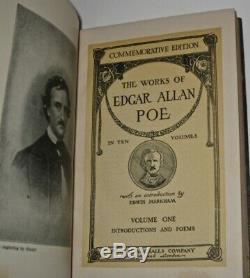
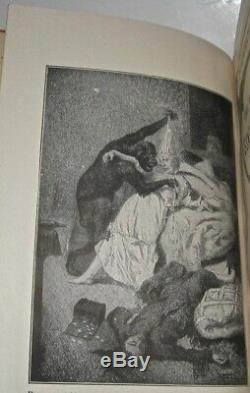
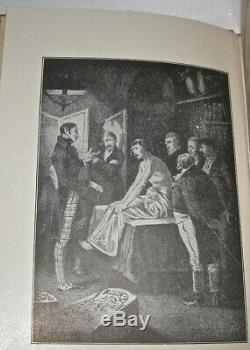

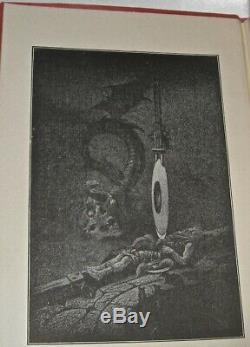
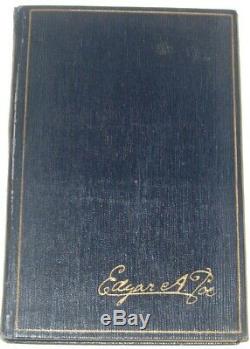
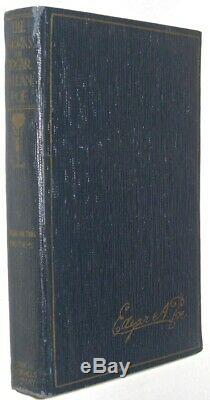
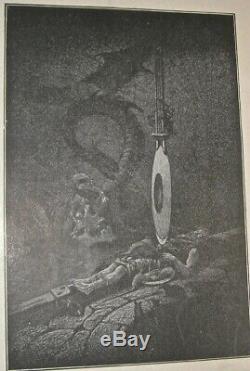
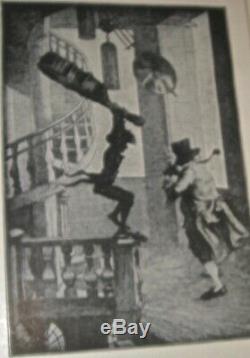
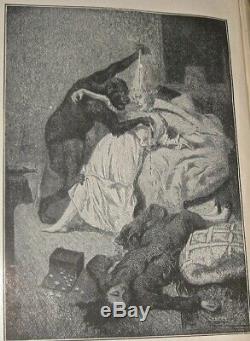
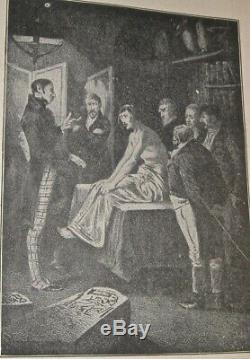


THE COMPLETE WORKS OF EDGAR ALLAN POE! This set is well OVER 115 YEARS OLD! Funk & Wagnalls Company, NY and London. Bound in the Publisher's blue faux leather bindings. These are not genuine leather. This is The Commemorative Edition. The top edges are gilded.
Appears free of all foxing. This is a gorgeous set, and displays beautifully! This would make an excellent gift and/or addition to any fine library.
In VERY GOOD condition, with some. This set is in exceptional condition and appears unread.The bindings are tight and try to close. All hinges are fully and strongly attached. There is no writing or previous signs of ownership.
The main and only point of wear is external abrasion and rubbing to the spine extremities, as visible in the pictures around the perimeter of the spines. Clean internally and set appears free of foxing. Date is not printed on title page. This set is over 100 YEARS OLD! I always pack very securely to ensure safe arrival at your doorstep.
All books are individually wrapped and professionally padded. Please see our other listings for similar rare books!
From Wikipedia, the free encyclopedia. For other uses with the name Poe, see Poe (disambiguation). This article is about the American writer. For a relative, see Edgar Allan Poe (Maryland attorney general). For other people called Edgar Allan Poe, see Edgar Allan Poe (disambiguation). 1849 "Annie" daguerreotype of Poe. Edgar Poe January 19, 1809 Boston. October 7, 1849 (aged 40) Baltimore. Born Edgar Poe ; January 19, 1809 October 7, 1849 was an American writer, editor, and literary critic. Poe is best known for his poetry and short stories, particularly his tales of mystery and the macabre. He is widely regarded as a central figure of Romanticism.In the United States and of American literature as a whole, and he was one of the country's earliest practitioners of the short story. He is generally considered the inventor of the detective fiction genre and is further credited with contributing to the emerging genre of science fiction. He was the first well-known American writer to earn a living through writing alone, resulting in a financially difficult life and career. Poe was born in Boston.
The second child of actors David and Elizabeth "Eliza" Arnold Hopkins Poe. His father abandoned the family in 1810, and his mother died the following year. Thus orphaned, the child was taken in by John and Frances Allan of Richmond, Virginia. They never formally adopted him, but he was with them well into young adulthood.
Tension developed later as John Allan and Poe repeatedly clashed over debts, including those incurred by gambling, and the cost of Poe's secondary education. He attended the University of Virginia.Poe quarreled with Allan over the funds for his education and enlisted in the Army in 1827 under an assumed name. It was at this time that his publishing career began with the anonymous collection Tamerlane and Other Poems. (1827), credited only to "a Bostonian".
Poe and Allan reached a temporary rapprochement after the death of Frances Allan in 1829. Poe later failed as an officer cadet at West Point. Declaring a firm wish to be a poet and writer, and he ultimately parted ways with John Allan. Poe switched his focus to prose and spent the next several years working for literary journals and periodicals, becoming known for his own style of literary criticism. His work forced him to move among several cities, including Baltimore, Philadelphia, and New York City.
In 1836, his 13-year-old cousin. In January 1845, Poe published his poem The Raven. To instant success, but Virginia died of tuberculosis two years after its publication. Poe planned for years to produce his own journal The Penn later renamed The Stylus. , but he died before it could be produced.He died in Baltimore on October 7, 1849, at age 40; the cause of his death is unknown and has been variously attributed to alcohol, "brain congestion", cholera, drugs, heart disease, rabies, suicide, tuberculosis, and other causes. Poe and his works influenced literature around the world, as well as specialized fields such as cosmology and cryptography. He and his work appear throughout popular culture in literature, music, films, and television. A number of his homes are dedicated museums today. The Mystery Writers of America.
Present an annual award known as the Edgar Award. For distinguished work in the mystery genre. Preserved homes, landmarks, and museums.Where Edgar Poe was born. He was born Edgar Poe in Boston.
On January 19, 1809, the second child of English-born actress Elizabeth Arnold Hopkins Poe. And actor David Poe Jr. He had an elder brother William Henry Leonard Poe. And a younger sister Rosalie Poe. Their grandfather David Poe Sr.Had immigrated from County Cavan. Edgar may have been named after a character in William Shakespeare. Which the couple were performing in 1809.
His father abandoned the family in 1810. And his mother died a year later from consumption pulmonary tuberculosis. Poe was then taken into the home of John Allan, a successful merchant in Richmond, Virginia. Who dealt in a variety of goods, including tobacco, cloth, wheat, tombstones, and slaves. The Allans served as a foster family and gave him the name "Edgar Allan Poe". Though they never formally adopted him. The Allan family had Poe baptized in the Episcopal Church in 1812. John Allan alternately spoiled and aggressively disciplined his foster son.The family sailed to Britain in 1815, and Poe attended the grammar school for a short period in Irvine. Scotland (where John Allan was born) before rejoining the family in London in 1816. There he studied at a boarding school in Chelsea. He was subsequently entered at the Reverend John Bransby's Manor House School at Stoke Newington.
Then a suburb 4 miles (6 km) north of London. Poe moved with the Allans back to Richmond, Virginia in 1820. In 1824, he served as the lieutenant of the Richmond youth honor guard as Richmond celebrated the visit of the Marquis de Lafayette. In March 1825, John Allan's uncle and business benefactor William Galt died, who was said to be one of the wealthiest men in Richmond. Leaving Allan several acres of real estate.By summer 1825, Allan celebrated his expansive wealth by purchasing a two-story brick home named Moldavia. Poe may have become engaged to Sarah Elmira Royster. Before he registered at the University of Virginia. In February 1826 to study ancient and modern languages. The university was in its infancy, established on the ideals of its founder Thomas Jefferson.
It had strict rules against gambling, horses, guns, tobacco, and alcohol, but these rules were generally ignored. Jefferson had enacted a system of student self-government, allowing students to choose their own studies, make their own arrangements for boarding, and report all wrongdoing to the faculty.
The unique system was still in chaos, and there was a high dropout rate. During his time there, Poe lost touch with Royster and also became estranged from his foster father over gambling debts.
He gave up on the university after a year but did not feel welcome returning to Richmond, especially when he learned that his sweetheart Royster had married Alexander Shelton. He traveled to Boston in April 1827, sustaining himself with odd jobs as a clerk and newspaper writer. And he started using the pseudonym Henri Le Rennet during this period.
Poe was first stationed at Boston's Fort Independence. Poe was unable to support himself, so he enlisted in the United States Army. As a private on May 27, 1827, using the name Edgar A. He claimed that he was. Even though he was 18.
He first served at Fort Independence. For five dollars a month. That same year, he released his first book, a 40-page collection of poetry titled Tamerlane and Other Poems. Attributed with the byline "by a Bostonian".
Only 50 copies were printed, and the book received virtually no attention. Poe's regiment was posted to Fort Moultrie.
Poe was promoted to "artificer", an enlisted tradesman who prepared shells for artillery. And had his monthly pay doubled.
He served for two years and attained the rank of Sergeant Major for Artillery (the highest rank that a noncommissioned officer could achieve); he then sought to end his five-year enlistment early. He revealed his real name and his circumstances to his commanding officer, Lieutenant Howard.
Howard would only allow Poe to be discharged. If he reconciled with John Allan and wrote a letter to Allan, who was unsympathetic. Several months passed and pleas to Allan were ignored; Allan may not have written to Poe even to make him aware of his foster mother's illness. Frances Allan died on February 28, 1829, and Poe visited the day after her burial. Perhaps softened by his wife's death, John Allan agreed to support Poe's attempt to be discharged in order to receive an appointment to the United States Military Academy. Poe was finally discharged on April 15, 1829, after securing a replacement to finish his enlisted term for him. Before entering West Point, Poe moved back to Baltimore for a time to stay with his widowed aunt Maria Clemm, her daughter Virginia Eliza Clemm. (Poe's first cousin), his brother Henry, and his invalid grandmother Elizabeth Cairnes Poe. Meanwhile, Poe published his second book Al Aaraaf, Tamerlane and Minor Poems in Baltimore in 1829.Poe traveled to West Point and matriculated as a cadet on July 1, 1830. In October 1830, John Allan married his second wife Louisa Patterson. The marriage and bitter quarrels with Poe over the children born to Allan out of affairs led to the foster father finally disowning Poe.
Poe decided to leave West Point by purposely getting court-martialed. On February 8, 1831, he was tried for gross neglect of duty and disobedience of orders for refusing to attend formations, classes, or church. Poe tactically pleaded not guilty to induce dismissal, knowing that he would be found guilty. He left for New York in February 1831 and released a third volume of poems, simply titled Poems. They may have been expecting verses similar to the satirical ones that Poe had been writing about commanding officers. It was printed by Elam Bliss of New York, labeled as "Second Edition, " and including a page saying, To the U. Corps of Cadets this volume is respectfully dedicated. The book once again reprinted the long poems "Tamerlane" and "Al Aaraaf" but also six previously unpublished poems, including early versions of To Helen.", and " The City in the Sea. His elder brother Henry had been in ill health, in part due to problems with alcoholism, and he died on August 1, 1831.
After his brother's death, Poe began more earnest attempts to start his career as a writer, but he chose a difficult time in American publishing to do so. He was one of the first Americans to live by writing alone. American publishers often produced unauthorized copies of British works rather than paying for new work by Americans. The industry was also particularly hurt by the Panic of 1837. There was a booming growth in American periodicals around this time, fueled in part by new technology, but many did not last beyond a few issues.
Publishers often refused to pay their writers or paid them much later than they promised. Poe (age 26) obtained a license in 1835 to marry his cousin Virginia Clemm.They were married for 11 years until her death, which may have inspired some of his writing. After his early attempts at poetry, Poe had turned his attention to prose.
He placed a few stories with a Philadelphia publication and began work on his only drama Politian. Awarded him a prize in October 1833 for his short story MS. The story brought him to the attention of John P. A Baltimorean of considerable means.
He helped Poe place some of his stories, and introduced him to Thomas W. White, editor of the Southern Literary Messenger. Poe became assistant editor of the periodical in August 1835. But White discharged him within a few weeks for being drunk on the job.
He was 26 and she was 13. He was reinstated by White after promising good behavior, and he went back to Richmond with Virginia and her mother. He remained at the Messenger until January 1837.During this period, Poe claimed that its circulation increased from 700 to 3,500. He published several poems, book reviews, critiques, and stories in the paper. On May 16, 1836, he and Virginia held a Presbyterian wedding ceremony at their Richmond boarding house, with a witness falsely attesting Clemm's age as 21. The Narrative of Arthur Gordon Pym of Nantucket. Was published and widely reviewed in 1838.
In the summer of 1839, Poe became assistant editor of Burton's Gentleman's Magazine. He published numerous articles, stories, and reviews, enhancing his reputation as a trenchant critic which he had established at the Southern Literary Messenger. Also in 1839, the collection Tales of the Grotesque and Arabesque.
Poe left Burton's after about a year and found a position as assistant at Graham's Magazine. In June 1840, Poe published a prospectus announcing his intentions to start his own journal called The Stylus. Although he originally intended to call it The Penn , as it would have been based in Philadelphia. He bought advertising space for his prospectus in the June 6, 1840 issue of Philadelphia's Saturday Evening Post.
Prospectus of the Penn Magazine, a Monthly Literary journal to be edited and published in the city of Philadelphia by Edgar A. The journal was never produced before Poe's death. Around this time, he attempted to secure a position within the administration of President Tyler, claiming that he was a member of the Whig Party. He hoped to be appointed to the Custom House in Philadelphia with help from President Tyler's son Robert. An acquaintance of Poe's friend Frederick Thomas. Poe failed to show up for a meeting with Thomas to discuss the appointment in mid-September 1842, claiming to have been sick, though Thomas believed that he had been drunk. Poe was promised an appointment, but all positions were filled by others. Where Poe spent his last years. One evening in January 1842, Virginia showed the first signs of consumption, now known as tuberculosis. While singing and playing the piano, which Poe described as breaking a blood vessel in her throat.She only partially recovered, and Poe began to drink more heavily under the stress of her illness. He left Graham's and attempted to find a new position, for a time angling for a government post. There he alienated himself from other writers by publicly accusing Henry Wadsworth Longfellow. Of plagiarism, though Longfellow never responded. On January 29, 1845, his poem The Raven.
Appeared in the Evening Mirror and became a popular sensation. It made Poe a household name almost instantly. It was concurrently published in The American Review: A Whig Journal. The Broadway Journal failed in 1846. And Poe moved to a cottage in Fordham. New York in what is now the Bronx. That home is now known as the Edgar Allan Poe Cottage. Relocated to a park near the southeast corner of the Grand Concourse. Nearby, he befriended the Jesuits at St. John's College, now Fordham University. Virginia died at the cottage on January 30, 1847. Biographers and critics often suggest that Poe's frequent theme of the "death of a beautiful woman" stems from the repeated loss of women throughout his life, including his wife. Poe was increasingly unstable after his wife's death.He attempted to court poet Sarah Helen Whitman. Who lived in Providence, Rhode Island.
Their engagement failed, purportedly because of Poe's drinking and erratic behavior. There is also strong evidence that Whitman's mother intervened and did much to derail their relationship. Edgar Allan Poe is buried at Westminster Hall. (Lat: 39.29027; Long: 76.62333).The circumstances and cause of his death remain uncertain. Main article: Death of Edgar Allan Poe. On October 3, 1849, Poe was found delirious on the streets of Baltimore, "in great distress, and in need of immediate assistance", according to Joseph W.
He was taken to the Washington Medical College. Where he died on Sunday, October 7, 1849 at 5:00 in the morning. He was not coherent long enough to explain how he came to be in his dire condition and, oddly, was wearing clothes that were not his own.He is said to have repeatedly called out the name "Reynolds" on the night before his death, though it is unclear to whom he was referring. Some sources say that Poe's final words were "Lord help my poor soul". All medical records have been lost, including his death certificate. Newspapers at the time reported Poe's death as "congestion of the brain" or "cerebral inflammation", common euphemisms for death from disreputable causes such as alcoholism.
The actual cause of death remains a mystery. Speculation has included delirium tremens. Heart disease, epilepsy, syphilis, meningeal inflammation. One theory dating from 1872 suggests that cooping. Was the cause of Poe's death, a form of electoral fraud in which citizens were forced to vote for a particular candidate, sometimes leading to violence and even murder. Immediately after Poe's death, his literary rival Rufus Wilmot Griswold. High-profile obituary under a pseudonym. Filled with falsehoods that cast him as a lunatic and a madman, and which described him as a person who "walked the streets, in madness or melancholy, with lips moving in indistinct curses, or with eyes upturned in passionate prayers, (never for himself, for he felt, or professed to feel, that he was already damned)". The long obituary appeared in the New York Tribune.Signed "Ludwig" on the day that Poe was buried. It was soon further published throughout the country. The piece began, Edgar Allan Poe is dead. He died in Baltimore the day before yesterday. This announcement will startle many, but few will be grieved by it.
"Ludwig" was soon identified as Griswold, an editor, critic, and anthologist who had borne a grudge against Poe since 1842. Griswold somehow became Poe's literary executor and attempted to destroy his enemy's reputation after his death. Griswold wrote a biographical article of Poe called "Memoir of the Author", which he included in an 1850 volume of the collected works. There he depicted Poe as a depraved, drunken, drug-addled madman and included Poe's letters as evidence. Many of his claims were either lies or distorted half-truths.
For example, it is seriously disputed that Poe really was a drug addict. Griswold's book was denounced by those who knew Poe well. But it became a popularly accepted biographical source. This occurred in part because it was the only full biography available and was widely reprinted, and in part because readers thrilled at the thought of reading works by an "evil" man.
Letters that Griswold presented as proof were later revealed to be forgeries. After Poes death, Griswold convinced Poes mother-in-law to sign away the rights. Griswold went on to publish the collected works attached with his own fabricated biography of Poe that invented stories of his drunkenness, immorality and instability.1845 portrait by Samuel Stillman Osgood. Poe's best known fiction works are Gothic.
A genre that he followed to appease the public taste. His most recurring themes deal with questions of death, including its physical signs, the effects of decomposition, concerns of premature burial. The reanimation of the dead, and mourning.
Many of his works are generally considered part of the dark romanticism. Genre, a literary reaction to transcendentalism. He referred to followers of the transcendental movement as "Frog-Pondians", after the pond on Boston Common. And ridiculed their writings as metaphor. Lapsing into "obscurity for obscurity's sake" or "mysticism for mysticism's sake". Poe once wrote in a letter to Thomas Holley Chivers.That he did not dislike Transcendentalists, only the pretenders and sophists. Beyond horror, Poe also wrote satires, humor tales, and hoaxes.
For comic effect, he used irony and ludicrous extravagance, often in an attempt to liberate the reader from cultural conformity. Is the first story that Poe is known to have published.And his first foray into horror, but it was originally intended as a burlesque. Poe also reinvented science fiction, responding in his writing to emerging technologies such as hot air balloons. Poe wrote much of his work using themes aimed specifically at mass-market tastes. To that end, his fiction often included elements of popular pseudosciences. Poe's writing reflects his literary theories, which he presented in his criticism and also in essays such as The Poetic Principle.
Though he believed that meaning in literature should be an undercurrent just beneath the surface. Works with obvious meanings, he wrote, cease to be art. He believed that work of quality should be brief and focus on a specific single effect. To that end, he believed that the writer should carefully calculate every sentiment and idea. Poe describes his method in writing "The Raven" in the essay The Philosophy of Composition., and he claims to have strictly followed this method. It has been questioned whether he really followed this system, however. Said: It is difficult for us to read that essay without reflecting that if Poe plotted out his poem with such calculation, he might have taken a little more pains over it: the result hardly does credit to the method.
Biographer Joseph Wood Krutch described the essay as "a rather highly ingenious exercise in the art of rationalization". Illustration by French impressionist Édouard Manet.During his lifetime, Poe was mostly recognized as a literary critic. Fellow critic James Russell Lowell.
Called him "the most discriminating, philosophical, and fearless critic upon imaginative works who has written in America", suggestingrhetoricallythat he occasionally used prussic acid. Poe's caustic reviews earned him the reputation of being a "tomahawk man". A favorite target of Poe's criticism was Boston's acclaimed poet Henry Wadsworth Longfellow. Who was often defended by his literary friends in what was later called "The Longfellow War". Poe accused Longfellow of "the heresy of the didactic", writing poetry that was preachy, derivative, and thematically plagiarized. Poe correctly predicted that Longfellow's reputation and style of poetry would decline, concluding, "We grant him high qualities, but deny him the Future". Poe was also known as a writer of fiction and became one of the first American authors of the 19th century to become more popular in Europe than in the United States. Poe is particularly respected in France, in part due to early translations by Charles Baudelaire. Baudelaire's translations became definitive renditions of Poe's work throughout Europe.Poe's early detective fiction. Laid the groundwork for future detectives in literature.
Said, Each [of Poe's detective stories] is a root from which a whole literature has developed.... Where was the detective story until Poe breathed the breath of life into it? Have named their awards for excellence in the genre the Edgars. Poe's work also influenced science fiction, notably Jules Verne. Who wrote a sequel to Poe's novel The Narrative of Arthur Gordon Pym of Nantucket. Also known as The Sphinx of the Ice Fields. Noted, " Pym tells what a very intelligent mind could imagine about the south polar region a century ago". Cited The Narrative of Arthur Gordon Pym of Nantucket as one of the greatest novels ever written in the English language, and noted its influence on later authors such as Henry James.Once said "It's because I liked Edgar Allan Poe's stories so much that I began to make suspense films". Like many famous artists, Poe's works have spawned imitators. One trend among imitators of Poe has been claims by clairvoyants.
To be "channeling" poems from Poe's spirit. One of the most notable of these was Lizzie Doten, who published Poems from the Inner Life in 1863, in which she claimed to have "received" new compositions by Poe's spirit. The compositions were re-workings of famous Poe poems such as The Bells. , but which reflected a new, positive outlook. Poe, in a modern retouched version of the "Ultima Thule" daguerreotype.
Even so, Poe has received not only praise, but criticism as well. This is partly because of the negative perception of his personal character and its influence upon his reputation. Was occasionally critical of Poe and once called him "vulgar". Reacted to "The Raven" by saying, "I see nothing in it". And derisively referred to Poe as "the jingle man".Wrote that Poe's writing "falls into vulgarity" by being "too poetical"the equivalent of wearing a diamond ring on every finger. It is believed that only 12 copies have survived of Poe's first book Tamerlane and Other Poems. An essay written in 1848, included a cosmological theory that presaged the Big Bang. As well as the first plausible solution to Olbers' paradox.
Poe eschewed the scientific method in Eureka and instead wrote from pure intuition. For this reason, he considered it a work of art, not science. But insisted that it was still true. And considered it to be his career masterpiece. Even so, Eureka is full of scientific errors. In particular, Poe's suggestions ignored Newtonian principles. Regarding the density and rotation of planets. Poe had a keen interest in cryptography. He had placed a notice of his abilities in the Philadelphia paper Alexander's Weekly (Express) Messenger , inviting submissions of ciphers. Which he proceeded to solve. In July 1841, Poe had published an essay called "A Few Words on Secret Writing" in Graham's Magazine. Capitalizing on public interest in the topic, he wrote The Gold-Bug. Incorporating ciphers as an essential part of the story. Poe's success with cryptography relied not so much on his deep knowledge of that field his method was limited to the simple substitution cryptogram.As on his knowledge of the magazine and newspaper culture. His keen analytical abilities, which were so evident in his detective stories, allowed him to see that the general public was largely ignorant of the methods by which a simple substitution cryptogram can be solved, and he used this to his advantage. The sensation that Poe created with his cryptography stunts played a major role in popularizing cryptograms in newspapers and magazines. Poe had an influence on cryptography beyond increasing public interest during his lifetime.
America's foremost cryptologist, was heavily influenced by Poe. Friedman's initial interest in cryptography came from reading "The Gold-Bug" as a child, an interest that he later put to use in deciphering Japan's PURPLE. Code during World War II. Main articles: Edgar Allan Poe in popular culture.And Edgar Allan Poe in television and film. The historical Edgar Allan Poe has appeared as a fictionalized character, often representing the "mad genius" or "tormented artist" and exploiting his personal struggles.
Many such depictions also blend in with characters from his stories, suggesting that Poe and his characters share identities. Often, fictional depictions of Poe use his mystery-solving skills in such novels as The Poe Shadow. The Edgar Allan Poe National Historic Site. In Philadelphia is one of several preserved former residences of Poe.No childhood home of Poe is still standing, including the Allan family's Moldavia estate. The oldest standing home in Richmond, the Old Stone House, is in use as the Edgar Allan Poe Museum.
Though Poe never lived there. The collection includes many items that Poe used during his time with the Allan family, and also features several rare first printings of Poe works. 13 West Range is the dorm room that Poe is believed to have used while studying at the University of Virginia in 1826; it is preserved and available for visits. Its upkeep is now overseen by a group of students and staff known as the Raven Society. The earliest surviving home in which Poe lived is in Baltimore, preserved as the Edgar Allan Poe House and Museum. Poe is believed to have lived in the home at the age of 23 when he first lived with Maria Clemm and Virginia (as well as his grandmother and possibly his brother William Henry Leonard Poe). It is open to the public and is also the home of the Edgar Allan Poe Society. Of the several homes that Poe, his wife Virginia, and his mother-in-law Maria rented in Philadelphia, only the last house has survived. The Spring Garden home, where the author lived in 18431844, is today preserved by the National Park Service. As the Edgar Allan Poe National Historic Site.Poe's final home is preserved as the Edgar Allan Poe Cottage. In Boston, a commemorative plaque on Boylston Street is several blocks away from the actual location of Poe's birth.
The house which was his birthplace at 62 Carver Street no longer exists; also, the street has since been renamed "Charles Street South". A "square" at the intersection of Broadway, Fayette, and Carver Streets had once been named in his honor. But it disappeared when the streets were rearranged. In 2009, the intersection of Charles and Boylston Streets (two blocks north of his birthplace) was designated "Edgar Allan Poe Square". In March 2014, fundraising was completed for construction of a permanent memorial sculpture at this location. The winning design by Stefanie Rocknak depicts a life-sized Poe striding against the wind, accompanied by a flying raven; his suitcase lid has fallen open, leaving a "paper trail" of literary works embedded in the sidewalk behind him. The public unveiling on October 5, 2014 was attended by former US poet laureate Robert Pinsky. Other Poe landmarks include a building in the Upper West Side. Where Poe temporarily lived when he first moved to New York. A plaque suggests that Poe wrote "The Raven" here. The bar still stands where legend says that Poe was last seen drinking before his death, in Fell's Point. The drinking establishment is now known as "The Horse You Came in On", and local lore insists that a ghost whom they call "Edgar" haunts the rooms above. Early daguerreotypes of Poe continue to arouse great interest among literary historians. "Ultima Thule" ("far discovery") to honor the new photographic technique; taken in November 1848 in Providence, Rhode Island, probably by Edwin H."Annie", given to Poe's friend Mrs. Richmond; probably taken in June 1849 in Lowell, Massachusetts, photographer unknown. A bottle of cognac and three roses were left at Poe's original grave marker for decades every January 19 by an unknown visitor affectionately referred to as the "Poe Toaster".
Sam Porpora was a historian at the Westminster Church in Baltimore where Poe is buried, and he claimed on August 15, 2007 that he had started the tradition in 1949. His story has not been confirmed. And some details which he gave to the press are factually inaccurate. The Poe Toaster's last appearance was on January 19, 2009, the day of Poe's bicentennial. Main article: Edgar Allan Poe bibliography.
A Descent into the Maelström. The Facts in the Case of M. The Fall of the House of Usher. The Imp of the Perverse. The Masque of the Red Death. The Murders in the Rue Morgue. The Pit and the Pendulum. The System of Doctor Tarr and Professor Fether.The City in the Sea. A Dream Within a Dream. (1835) Poe's only play.
(1838) Poe's only complete novel. Printed as a true story. (1849) Poe's last incomplete work. Please see my other listing for similar rare books and sets. The item "THE WORKS of EDGAR ALLAN POE!
Not leather Set Antique Complete RARE! GIFT raven" is in sale since Monday, July 1, 2019. This item is in the category "Books\Antiquarian & Collectible".books" and is located in Moab, Utah.
This item can be shipped worldwide.- Publisher: Funk & Wagnalls Company
- Subject: Literature & Fiction
- Place of Publication: New York & London
- Country/Region of Manufacture: United States
- Author: Edgar Allan Poe
- Topic: Classics
- Year Printed: 1904
- Language: English
- Special Attributes: Complete
- Origin: English
- Original/Facsimile: Original
- Binding: Fine Binding

